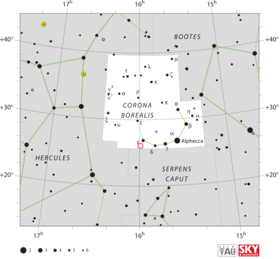
Excited and patiently anticipating a 2024 Nova of T Coronae Borealis
T Coronae Borealis (T CrB)
2024-10-05 (latest) Update
So the summer has past and no change reported, Perhaps they did not get it right.. It will happen and we will be surprised when it does, I imagine.
2024-06-04 Update
Every 5-7 days I am reporting an update, I am actually checking the sky and/or the AAVSO website every day, don’t want to miss this one. The star is holding steady at 10.2.
2024-05-26 Update
Did a quick check of the data posted to the AAVSO website, and the most recent visual observations of this star has it holding steady at around 10.152 ish magnitude. Based on the visual spectrum reports at AAVSO. Also, there are a lot of people looking at the star with 500+ reports being logged each day. A lot of observers are watching it, will you be the first one to notice?
T Coronae Borealis (T CrB)
T Coronae Borealis (T CrB), is a recurrent nova in the constellation Corona Borealis. It was first discovered in outburst in 1866 by John Birmingham, although it had been observed earlier as a 10th magnitude star. It may have been observed in 1217 and in 1787 as well.
T CrB normally has a magnitude of around 10, which is near the limit of typical binoculars. It has been seen to outburst twice, reaching magnitude 2.0 on May 12, 1866 and magnitude 3.0 on February 9, 1946, although a more recent paper shows the 1866 outburst with a possible peak range of magnitude 2.5 ± 0.5. Even when at peak magnitude of 2.5, this recurrent nova is dimmer than about 120 stars in the night sky. It is sometimes nicknamed the Blaze Star.
What is the current brightness of T Coronae Borealis
The current News is that T Coronae Borealis is expected to go Nova at some point in the next few months. When this happens it is suggested that it may be as bright as a 2nd or 3rd Magnitude object. This means it will be as bright as the brightest stars in this small constellation. Not as spectacular as one might expect from reading some of the more popular media, but certainly an exceptional event, that is worth looking for in the sky when it happens.
I thought I would pull some information together to inform the public how to go about observing and watching for this event to start.
The AAVSO website reports the most recent observations of the star as of today (March 23, 2024), or about a visual magnitude is 10.4, which is about its average brightness and at the absolute limit for a large pair of Binoculars or a small telescope. This chart can be generated using this link on the AAVSO website
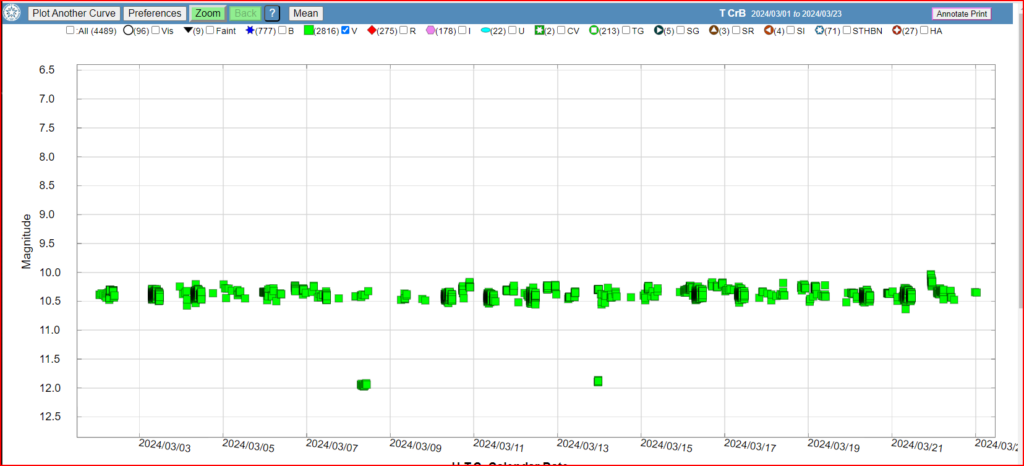
As you can see, there is not much to see. All of this could change rapidly when this nova event occurs. So it’s worth your while to take a look at the area where this star is in Coronae Borealis at least once a night and report the brightness on the AAVSO website. If you generate a light curve you can also see a list of other people that are monitoring the site.
Finding T Coronae Borealis
The AAVSO site provides resources to help you estimate the brightness of the star. These can be accessed and downloaded https://www.aavso.org/. Enter the name of the star as I have done, then click on the link to Create a Finder Chart
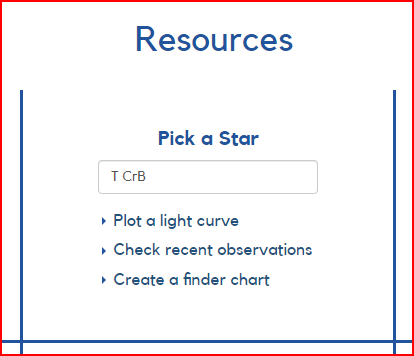
If you follow this instruction, you should generate the following chart:
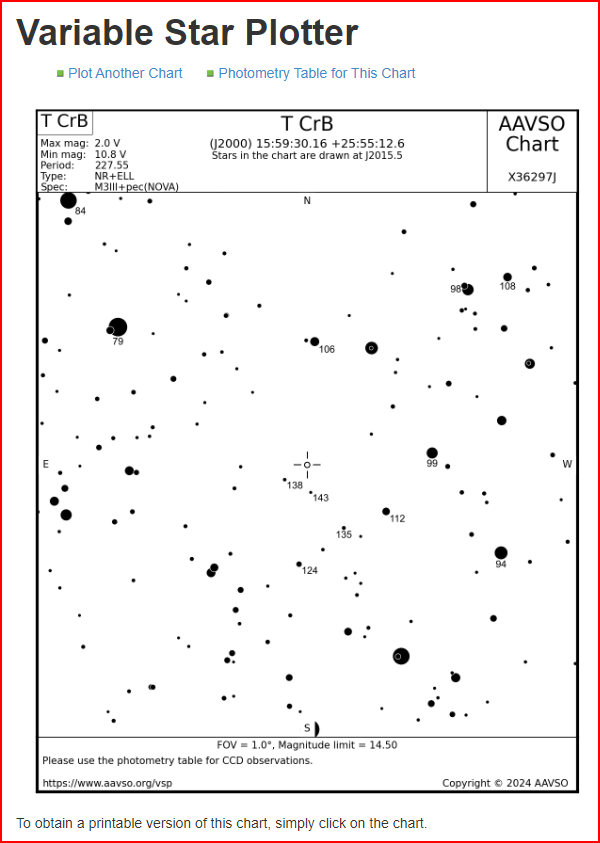
the other link in this panel is to see what the current observations are, on the day that this star goes NOVA it will be very active. For practice submit your observations.
When will it happen
From reading the literature it is something that might happen at any time in the next 6 months. Corona Borealis is well positioned for viewing in the Northern Hemisphere in the evening skies well into September when is will move to the NW and set soon after twilight ends.
Where is this in the Sky, and when do I look for it?
T Coronae Borealis lies between Bootes and Hercules. in the next few months the star will track it’s way westward, but in April/May. It will be high overhead around midnight and is well placed for observing at this time on any clear night. T Coronae Borealis is in the vicinity of the red circle
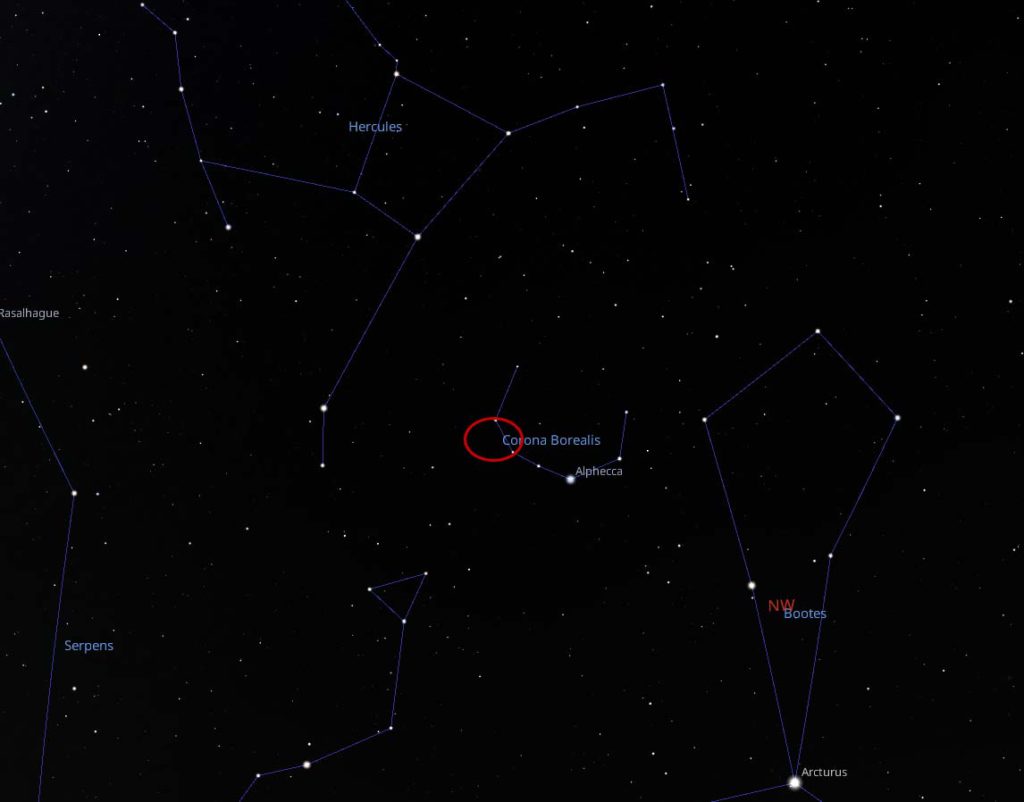
And a little more focused, the rectangle more or less maps to the AAVSO finder chart:
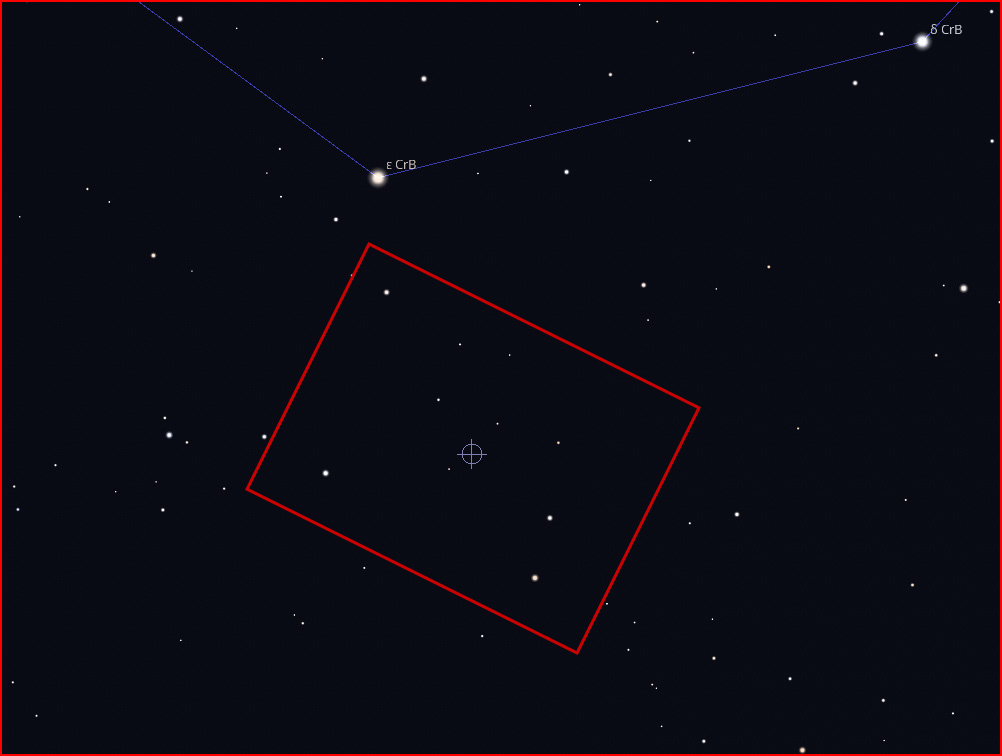
More information can be found in the links here
Links in the media about this story:
https://blogs.nasa.gov/Watch_the_Skies/2024/02/27/view-nova-explosion-new-star-in-northern-crown/
https://www.bbc.com/future/article/20240322-visible-nova-explosion-is-coming